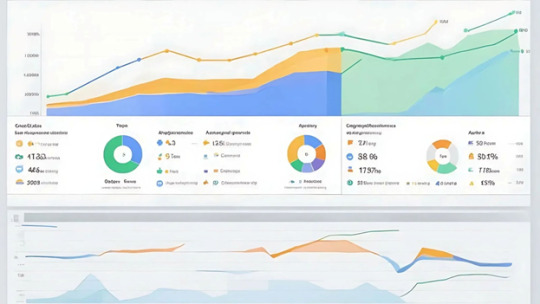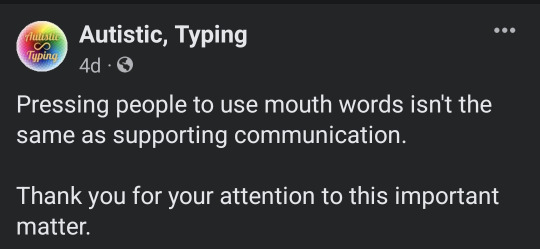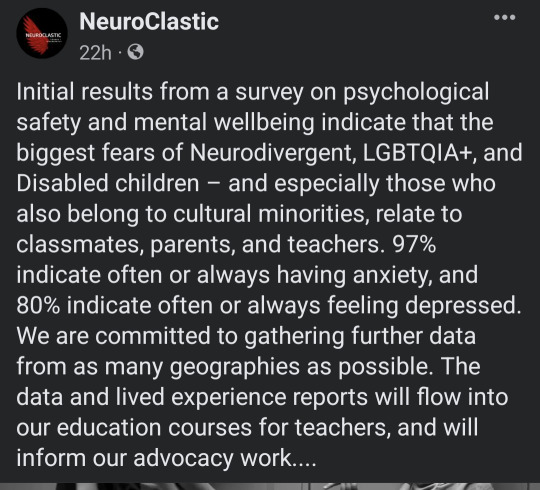#google ads competitor research
Explore tagged Tumblr posts
Text
Unveiling the Power of Google Ads Competitor Analysis

In the realm of online advertising, Google Ads reigns supreme as a potent tool for connecting with potential customers. However, maximizing the efficacy of your Google Ads campaigns necessitates a profound comprehension of your own performance metrics, alongside a strategic grasp of your competitors' maneuvers and tactics. This is where the significance of competitor analysis becomes pronounced – a methodical process that unveils invaluable insights, enabling you to refine your advertising endeavors and maintain a competitive edge.
#google ads competitor analysis tools#google ads competitor research#google ads keyword planner competitor analysis#google ads auction insights#google ads competitor analysis software#google ads competitive analysis tools#google ads competitor keywords#google ads campaign analysis tools#google ads competitor ad analysis#google ads competitor benchmarking
0 notes
Text
How to Analyse your Competition and Elevate Your Online Marketing Efforts
#Competitor#Competitor Analysis#Competitor Research#Content Marketing#Google Ads#Marketing#Online Marketing#SEO#Social Media#Social Media Ads#Social Media Ads Strategy
1 note
·
View note
Video
youtube
InstaKeywords - Stop Guessing and Start Succeeding with InstaKeywords "Easy-to-Rank SEO Keywords"
Are you tired of guessing which keywords will help your website rank higher on search engines? Look no further than InstaKeywords! Our online tool uses advanced algorithms to analyze your website and provide you with a list of easy-to-rank SEO keywords.
With InstaKeywords, you'll have access to keyword data from multiple search engines, including Google, Bing, and Yahoo. This means you can optimize your website for all search engines and get more traffic.
Don't waste any more time guessing which keywords will work for your website. Stop guessing and start succeeding with InstaKeywords. Try it today and watch your website traffic soar!
#youtube#Keyword Analysis SEO Search Engine Optimization Google Ranking Organic Traffic Competitor Research Web Analytics Content Optimization PPC Ad
1 note
·
View note
Text
AI is a WMD

I'm in TARTU, ESTONIA! AI, copyright and creative workers' labor rights (TOMORROW, May 10, 8AM: Science Fiction Research Association talk, Institute of Foreign Languages and Cultures building, Lossi 3, lobby). A talk for hackers on seizing the means of computation (TOMORROW, May 10, 3PM, University of Tartu Delta Centre, Narva 18, room 1037).

Fun fact: "The Tragedy Of the Commons" is a hoax created by the white nationalist Garrett Hardin to justify stealing land from colonized people and moving it from collective ownership, "rescuing" it from the inevitable tragedy by putting it in the hands of a private owner, who will care for it properly, thanks to "rational self-interest":
https://pluralistic.net/2023/05/04/analytical-democratic-theory/#epistocratic-delusions
Get that? If control over a key resource is diffused among the people who rely on it, then (Garrett claims) those people will all behave like selfish assholes, overusing and undermaintaining the commons. It's only when we let someone own that commons and charge rent for its use that (Hardin says) we will get sound management.
By that logic, Google should be the internet's most competent and reliable manager. After all, the company used its access to the capital markets to buy control over the internet, spending billions every year to make sure that you never try a search-engine other than its own, thus guaranteeing it a 90% market share:
https://pluralistic.net/2024/02/21/im-feeling-unlucky/#not-up-to-the-task
Google seems to think it's got the problem of deciding what we see on the internet licked. Otherwise, why would the company flush $80b down the toilet with a giant stock-buyback, and then do multiple waves of mass layoffs, from last year's 12,000 person bloodbath to this year's deep cuts to the company's "core teams"?
https://qz.com/google-is-laying-off-hundreds-as-it-moves-core-jobs-abr-1851449528
And yet, Google is overrun with scams and spam, which find their way to the very top of the first page of its search results:
https://pluralistic.net/2023/02/24/passive-income/#swiss-cheese-security
The entire internet is shaped by Google's decisions about what shows up on that first page of listings. When Google decided to prioritize shopping site results over informative discussions and other possible matches, the entire internet shifted its focus to producing affiliate-link-strewn "reviews" that would show up on Google's front door:
https://pluralistic.net/2024/04/24/naming-names/#prabhakar-raghavan
This was catnip to the kind of sociopath who a) owns a hedge-fund and b) hates journalists for being pain-in-the-ass, stick-in-the-mud sticklers for "truth" and "facts" and other impediments to the care and maintenance of a functional reality-distortion field. These dickheads started buying up beloved news sites and converting them to spam-farms, filled with garbage "reviews" and other Google-pleasing, affiliate-fee-generating nonsense.
(These news-sites were vulnerable to acquisition in large part thanks to Google, whose dominance of ad-tech lets it cream 51 cents off every ad dollar and whose mobile OS monopoly lets it steal 30 cents off every in-app subscriber dollar):
https://www.eff.org/deeplinks/2023/04/saving-news-big-tech
Now, the spam on these sites didn't write itself. Much to the chagrin of the tech/finance bros who bought up Sports Illustrated and other venerable news sites, they still needed to pay actual human writers to produce plausible word-salads. This was a waste of money that could be better spent on reverse-engineering Google's ranking algorithm and getting pride-of-place on search results pages:
https://housefresh.com/david-vs-digital-goliaths/
That's where AI comes in. Spicy autocomplete absolutely can't replace journalists. The planet-destroying, next-word-guessing programs from Openai and its competitors are incorrigible liars that require so much "supervision" that they cost more than they save in a newsroom:
https://pluralistic.net/2024/04/29/what-part-of-no/#dont-you-understand
But while a chatbot can't produce truthful and informative articles, it can produce bullshit – at unimaginable scale. Chatbots are the workers that hedge-fund wreckers dream of: tireless, uncomplaining, compliant and obedient producers of nonsense on demand.
That's why the capital class is so insatiably horny for chatbots. Chatbots aren't going to write Hollywood movies, but studio bosses hyperventilated at the prospect of a "writer" that would accept your brilliant idea and diligently turned it into a movie. You prompt an LLM in exactly the same way a studio exec gives writers notes. The difference is that the LLM won't roll its eyes and make sarcastic remarks about your brainwaves like "ET, but starring a dog, with a love plot in the second act and a big car-chase at the end":
https://pluralistic.net/2023/10/01/how-the-writers-guild-sunk-ais-ship/
Similarly, chatbots are a dream come true for a hedge fundie who ends up running a beloved news site, only to have to fight with their own writers to get the profitable nonsense produced at a scale and velocity that will guarantee a high Google ranking and millions in "passive income" from affiliate links.
One of the premier profitable nonsense companies is Advon, which helped usher in an era in which sites from Forbes to Money to USA Today create semi-secret "review" sites that are stuffed full of badly researched top-ten lists for products from air purifiers to cat beds:
https://housefresh.com/how-google-decimated-housefresh/
Advon swears that it only uses living humans to produce nonsense, and not AI. This isn't just wildly implausible, it's also belied by easily uncovered evidence, like its own employees' Linkedin profiles, which boast of using AI to create "content":
https://housefresh.com/wp-content/uploads/2024/05/Advon-AI-LinkedIn.jpg
It's not true. Advon uses AI to produce its nonsense, at scale. In an excellent, deeply reported piece for Futurism, Maggie Harrison Dupré brings proof that Advon replaced its miserable human nonsense-writers with tireless chatbots:
https://futurism.com/advon-ai-content
Dupré describes how Advon's ability to create botshit at scale contributed to the enshittification of clients from Yoga Journal to the LA Times, "Us Weekly" to the Miami Herald.
All of this is very timely, because this is the week that Google finally bestirred itself to commence downranking publishers who engage in "site reputation abuse" – creating these SEO-stuffed fake reviews with the help of third parties like Advon:
https://pluralistic.net/2024/05/03/keyword-swarming/#site-reputation-abuse
(Google's policy only forbids site reputation abuse with the help of third parties; if these publishers take their nonsense production in-house, Google may allow them to continue to dominate its search listings):
https://developers.google.com/search/blog/2024/03/core-update-spam-policies#site-reputation
There's a reason so many people believed Hardin's racist "Tragedy of the Commons" hoax. We have an intuitive understanding that commons are fragile. All it takes is one monster to start shitting in the well where the rest of us get our drinking water and we're all poisoned.
The financial markets love these monsters. Mark Zuckerberg's key insight was that he could make billions by assembling vast dossiers of compromising, sensitive personal information on half the world's population without their consent, but only if he kept his costs down by failing to safeguard that data and the systems for exploiting it. He's like a guy who figures out that if he accumulates enough oily rags, he can extract so much low-grade oil from them that he can grow rich, but only if he doesn't waste money on fire-suppression:
https://locusmag.com/2018/07/cory-doctorow-zucks-empire-of-oily-rags/
Now Zuckerberg and the wealthy, powerful monsters who seized control over our commons are getting a comeuppance. The weak countermeasures they created to maintain the minimum levels of quality to keep their platforms as viable, going concerns are being overwhelmed by AI. This was a totally foreseeable outcome: the history of the internet is a story of bad actors who upended the assumptions built into our security systems by automating their attacks, transforming an assault that wouldn't be economically viable into a global, high-speed crime wave:
https://pluralistic.net/2022/04/24/automation-is-magic/
But it is possible for a community to maintain a commons. This is something Hardin could have discovered by studying actual commons, instead of inventing imaginary histories in which commons turned tragic. As it happens, someone else did exactly that: Nobel Laureate Elinor Ostrom:
https://www.onthecommons.org/magazine/elinor-ostroms-8-principles-managing-commmons/
Ostrom described how commons can be wisely managed, over very long timescales, by communities that self-governed. Part of her work concerns how users of a commons must have the ability to exclude bad actors from their shared resources.
When that breaks down, commons can fail – because there's always someone who thinks it's fine to shit in the well rather than walk 100 yards to the outhouse.
Enshittification is the process by which control over the internet moved from self-governance by members of the commons to acts of wanton destruction committed by despicable, greedy assholes who shit in the well over and over again.
It's not just the spammers who take advantage of Google's lazy incompetence, either. Take "copyleft trolls," who post images using outdated Creative Commons licenses that allow them to terminate the CC license if a user makes minor errors in attributing the images they use:
https://pluralistic.net/2022/01/24/a-bug-in-early-creative-commons-licenses-has-enabled-a-new-breed-of-superpredator/
The first copyleft trolls were individuals, but these days, the racket is dominated by a company called Pixsy, which pretends to be a "rights protection" agency that helps photographers track down copyright infringers. In reality, the company is committed to helping copyleft trolls entrap innocent Creative Commons users into paying hundreds or even thousands of dollars to use images that are licensed for free use. Just as Advon upends the economics of spam and deception through automation, Pixsy has figured out how to send legal threats at scale, robolawyering demand letters that aren't signed by lawyers; the company refuses to say whether any lawyer ever reviews these threats:
https://pluralistic.net/2022/02/13/an-open-letter-to-pixsy-ceo-kain-jones-who-keeps-sending-me-legal-threats/
This is shitting in the well, at scale. It's an online WMD, designed to wipe out the commons. Creative Commons has allowed millions of creators to produce a commons with billions of works in it, and Pixsy exploits a minor error in the early versions of CC licenses to indiscriminately manufacture legal land-mines, wantonly blowing off innocent commons-users' legs and laughing all the way to the bank:
https://pluralistic.net/2023/04/02/commafuckers-versus-the-commons/
We can have an online commons, but only if it's run by and for its users. Google has shown us that any "benevolent dictator" who amasses power in the name of defending the open internet will eventually grow too big to care, and will allow our commons to be demolished by well-shitters:
https://pluralistic.net/2024/04/04/teach-me-how-to-shruggie/#kagi

If you'd like an essay-formatted version of this post to read or share, here's a link to it on pluralistic.net, my surveillance-free, ad-free, tracker-free blog:
https://pluralistic.net/2024/05/09/shitting-in-the-well/#advon

Image: Cryteria (modified) https://commons.wikimedia.org/wiki/File:HAL9000.svg
CC BY 3.0 https://creativecommons.org/licenses/by/3.0/deed.en
--
Catherine Poh Huay Tan (modified) https://www.flickr.com/photos/68166820@N08/49729911222/
Laia Balagueró (modified) https://www.flickr.com/photos/lbalaguero/6551235503/
CC BY 2.0 https://creativecommons.org/licenses/by/2.0/
#pluralistic#pixsy#wmds#automation#ai#botshit#force multipliers#weapons of mass destruction#commons#shitting in the drinking water#ostrom#elinor ostrom#sports illustrated#slop#advon#google#monopoly#site reputation abuse#enshittification#Maggie Harrison Dupré#futurism
319 notes
·
View notes
Text
Unbox a new phone in the US and it's almost certain to have Google as the default way to search the web. Federal judge Amit Mehta on Monday ruled in favor of the US Department of Justice that the contracts Google uses to secure that position violate fair competition laws. Now Mehta must decide what to do about it.
The jurist could order big changes to the unboxing experience, with users having to select their default search provider. He also could go as far as to force Google to sell parts of its business. Mehta scheduled a hearing for September to begin the process of deciding the penalties, but with Google appealing the verdict, it could be years—if ever—before the search giant must comply.
Though legal and economics experts say it’s difficult to guess where Mehta might land with his remedies, they have some ideas of what he might be considering. Here’s a look at five options.
Ban Revenue Sharing
US courts have generally tried to resolve antitrust violations by ordering an end to the illegal behavior, setting rules to prevent it from recurring, and taking any additional measures needed to ensure that the culprit and its competitors are moved onto an even field.
To satisfy that first prong, Mehta is widely expected to ban Google from continuing with arrangements under which it splits tens of billions of dollars in ad revenue among Apple, Samsung, Mozilla, and other companies that agree to set Google as the default search on their devices or software.
“At a minimum, the Justice Department will ask for an injunction that forbids Google from engaging in the conduct that the court deemed to be improper,” says William Kovacic, who previously served as an antitrust regulator on the US Federal Trade Commission.
An injunction might prevent Google from using its unmatched economic might to outspend smaller search companies, such as Bing, DuckDuckGo, or Ecosia, to secure exclusive default status. Positioning matters; Mehta’s ruling found that even when it’s easy for users to switch defaults, most people don’t adjust the setting. But some do prefer Google. That’s why “Google.com” is the most popular search term on Bing, which is the default on some Microsoft devices, according to Mehta’s ruling.
In the future, users who prefer Google may end up having to query “Google.com” in other search engines, too.
Require Choice Screens
Mehta could follow the lead of the European Union, which for years has required Google to offer a menu of search options on Android devices, and recently expanded the rule to the Chrome browser.
Experts don’t believe the European regulation has led to a significant increase in the popularity of Google alternatives because users recognize Google better than other options. “The horse is already out of the barn,” says Herbert Hovenkamp, an antitrust scholar at Penn Law School who has researched tech platforms. “One problem with free choice is that it won’t necessarily take down Google’s market share.”
But if Mehta pursues the approach, he should make some improvements on the EU’s rules, says Kamyl Bazbaz, senior vice president of public affairs at DuckDuckGo. Users should be prompted with the choice screen periodically, not just once, Bazbaz says. They shouldn’t have to deal with popups from Google urging them to switch the default to Google, he adds. And when users first interact with a competing search app, there should be an easy way to set it as the default app.
With these added measures, some searchers could find themselves more reliably ditching Google. Others could be frustrated by the recurring requests.
Order a Divestiture
Contract bans and choice screens are examples of conduct remedies. But the Justice Department in recent years has expressed a preference for what are known as structural remedies, or breaking off parts of a company.
Most famous is the breakup of telephone giant Bell in the 1980s, creating a variety of independent companies, including AT&T. But courts aren’t always on board. When Microsoft lost an antitrust battle in the 1990s, a federal appeals panel rejected an order to break up the company, and Microsoft eventually settled on a range of conduct changes.
A one-time sale is preferred by regulators in part because it doesn’t require them to invest in monitoring the ongoing compliance of companies in terms of conduct remedies. It’s a much cleaner break, and some antitrust experts contend that structural remedies are more effective.
The challenge is figuring out what parts of a company need to be separated. John Kwoka, an economics professor at Northeastern University who recently served as an adviser to FTC chair Lina Khan, says the key is identifying businesses in which ownership by Google are “distorting its incentives.” He says that, for instance, breaking off search could open the door to Google’s Android partnering with a different search engine.
But Hovenkamp doubts the potential of a search sell-off to increase competition because the service would remain popular. “Selling Google Search would just transfer the dominance to another firm,” he says. “I don't know what sort of breakup would work.”
Some financial analysts who study Google parent Alphabet are also skeptical. “Alphabet's scale, continued strong execution, and financial strength mitigate this legal risk and the possible ensuing financial and business model ramifications,” Emile El Nems, vice president for Moody's Ratings, said in a press statement.
Other legal experts envision a future in which search results would come from Google and the ads in the experience from another company that’s spun off from Google. It’s unclear how that remedy would affect users, but it’s possible ads could end up being less relevant and more intrusive.
Force Google to Share
Mehta found in his judgment that Google provides users a superior experience because it receives billions of more queries than any other search engine, and that data fuels improvements to the algorithms that decide which results to show for a particular query.
Rebecca Haw Allensworth, a law professor at Vanderbilt University following the Google case, says one of the most aggressive remedies would be requiring Google to share data or algorithms with its search competition so they too could improve. “Courts do not like to force sharing between rivals like that, but on the other hand, the judge seemed very concerned about how Google’s conduct has deprived its rivals of what they really need to compete—scale in search data,” she says. “Forcing data sharing would directly address that concern.”
Potential shareable data could include all the queries that users are running on Google and which results they are clicking, DuckDuckGo’s Bazbaz says.
Another option would have Google hold on to its data while instead providing a service on a nondiscriminatory basis, with adequate customer support, for other apps to pull results from Google and present them to users as part of a competing experience. Rivals have called Google’s existing offering in this regard inadequate.
“Only a multipronged remedy will allow rivals to enter the market and fairly compete for consumers based on the merits of their own product,” says Lee Hepner, senior counsel at the American Economic Liberties Project, an anti-monopoly advocacy group.
Any approach that involves Google sharing data is likely to raise questions about its users’ privacy. Strengthened rivals also would have a better shot at securing defaults, meaning those who’d rather use Google would again have to take a few more steps to get back to regular old Google.
Increase Oversight
It’s up to the Justice Department to propose to Mehta potential remedies, which Google would then get a chance to rebut. Neither side has previewed what it wants.
In some other antitrust battles, Google has found ways to design product and policy changes to continue to limit competition in part by making competing unaffordable for rivals. “Google will do anything it can to get in the way of progress,” Bazbaz says. That’s why he hopes Mehta establishes a monitoring body to administer the remedies and hold Google to their spirit.
Bazbaz also wants to see Google have to invest in public education initiatives to let users know about the benefits they can get from switching search engines. With oversight and PR measures in place, users may have no choice but to hear about the Google Search antitrust case for a long time to come.
40 notes
·
View notes
Text
PPC for E-commerce | Anadee Digital Solutions

PPC for E-commerce: A Complete Guide to Boosting Sales and Driving Growth
As the e-commerce industry expands, competition for consumer attention has become fiercer than ever. To effectively stand out and drive traffic to your online store, Pay-Per-Click (PPC) advertising has become an essential tool. By targeting potential customers at every stage of their buying journey, PPC campaigns can significantly increase both visibility and sales. In this guide, we’ll break down how to implement PPC for e-commerce, along with actionable tips to maximize your returns.
Understanding PPC for E-commerce
PPC advertising involves paying a fee each time someone clicks on one of your ads. These ads are placed on search engines, social media platforms, and other sites where users may be interested in your products. For e-commerce businesses, PPC campaigns can bring targeted traffic directly to product pages, boosting the likelihood of conversions.
PPC ads can be tailored to reach specific demographics, locations, or interests, giving businesses greater control over who sees their ads and when. PPC also includes multiple formats such as Google Search Ads, Display Ads, Shopping Ads, and Social Media Ads, which makes it adaptable to various campaign objectives, from product awareness to driving sales.
Benefits of PPC for E-commerce Businesses
Quick Results: PPC campaigns can generate immediate traffic and results.
High ROI Potential: With strategic targeting and budget control, PPC can deliver high returns by focusing on audiences likely to convert.
Scalability: You can start small and increase your budget as you see success.
Measurable Performance: PPC provides real-time analytics that allows you to track impressions, clicks, and conversions to optimize your campaigns.
Reaching Your Target Market: With specific targeting options, you can focus on consumers who are actively searching for your products or services.
Best PPC Strategies for E-commerce
1. Google Shopping Ads
Google Shopping Ads are essential for e-commerce. They display product images, prices, and descriptions directly on the search engine results page (SERP), making them more engaging and relevant to online shoppers. To make the most of Shopping Ads, ensure your product data feed is optimized. Use clear, high-quality images and relevant product titles and descriptions. Google uses this information to match search queries with your products, so precise descriptions help you reach a highly interested audience.
2. Remarketing Campaigns
Remarketing helps you target visitors who have previously shown interest in your products but didn’t complete a purchase. By creating tailored ads that remind them of items they viewed or abandoned in their cart, you increase the likelihood of conversions. Dynamic remarketing campaigns allow you to show personalized ads that feature specific products from your catalogue, keeping your brand and items top-of-mind for potential buyers.
3. Utilizing Social Media Ads
Social media platforms, such as Facebook and Instagram, allow for highly detailed audience targeting. Social media ads are excellent for brand awareness, generating leads, and even retargeting website visitors. For e-commerce, carousel ads are particularly effective because they enable users to scroll through multiple products within a single ad, increasing interaction rates.
4. Keyword and Competitor Analysis
Before launching a PPC campaign, conduct thorough keyword research to determine which search terms are likely to drive relevant traffic to your site. Using tools like Google Keyword Planner can help you find high-intent keywords related to your products. Additionally, performing competitor analysis allows you to identify gaps in your strategy, adjust bids on competitive keywords, and keep a competitive edge in the SERPs.
5. A/B Testing and Optimization
Constantly test and optimize your ad copy, visuals, and calls-to-action (CTAs). A/B testing enables you to find the most effective ads and maximize performance. For instance, experiment with different headlines, descriptions, and images in Google Shopping Ads. Similarly, monitor your campaign’s performance data to adjust bids, targeting, and budgets based on what’s working.
Measuring Success in PPC
Key metrics to monitor include:
Click-Through Rate (CTR): Indicates the relevancy of your ads to the audience.
Conversion Rate: Measures how many clicks turn into sales.
Cost Per Click (CPC): Tracks spending efficiency.
Return on Ad Spend (ROAS): Measures the revenue generated from your ad spend.
By analyzing these metrics, you can continually refine your PPC strategy to improve ROI and achieve better results.
PPC for e-commerce is a powerful way to drive targeted traffic, increase visibility, and boost sales. Anadee Digital offers the best-customized campaigns for your E-commerce business. By understanding your audience, using effective ad formats, and refining campaigns based on performance data, Anadee can create PPC campaigns that support your growth and revenue goals. With a well-executed PPC strategy, your e-commerce store can not only compete in today’s market but thrive. Contact us today to get a free audit of your e-commerce website and know more about the bottlenecks in your sales campaigns.
2 notes
·
View notes
Text
The Strategic Power of SEO for E-Commerce Success
In the hyper-competitive world of e-commerce, getting noticed isn’t just about having great products; it’s about visibility, trust, and conversion. This is where Search Engine Optimization (SEO) becomes a non-negotiable tool for growth.
The Advanced SEO Edge for E-Commerce
Here’s how a strategic SEO approach can transform your business:
1️⃣ Drive High-Intent Traffic
SEO isn’t just about traffic — it’s about the right traffic. By optimizing for buyer-intent keywords like “best organic skincare products” or “affordable gaming laptops,” you attract shoppers ready to make a purchase.
2️⃣ Compete Beyond Ads
While paid ads deliver instant results, SEO ensures your business is discoverable long-term — without a continuous ad budget. Organic search results also tend to receive more trust than paid placements, building credibility with customers.
3️⃣ Supercharge Product Pages
Product pages optimized for search engines do double duty: they showcase your inventory while bringing in new customers. Think detailed product descriptions, keyword-rich metadata, high-quality visuals, and schema markup for rich results like star ratings and pricing.
4️⃣ Build Brand Authority
SEO isn’t just about rankings — it’s about becoming a trusted resource. Content marketing (blogs, buying guides, videos) tied to SEO positions your brand as an expert, encouraging repeat visits and loyalty.
5️⃣ Optimize for Local and Global Reach
With local SEO, you can dominate your local market through Google My Business and localized keywords. At the same time, international SEO opens doors to customers worldwide, ensuring your brand grows alongside your ambitions.
Advanced Tactics to Implement Now
AI-Powered SEO Tools: Leverage AI for keyword research, content suggestions, and predictive search trend analysis.
Voice Search Optimization: Optimize for conversational queries like “Where can I buy sustainable shoes near me?”
Core Web Vitals: Fast-loading, mobile-friendly websites are non-negotiable for SEO and conversions.
Content That Converts: Create content tailored to each stage of the buyer’s journey — from discovery (blogs) to decision-making (product comparison pages).
The ROI of SEO
An investment in SEO doesn’t just drive traffic; it fuels growth. Higher visibility leads to:
Increased conversion rates
Lower customer acquisition costs
Sustainable revenue streams
💼 Business Insight: Brands that prioritize SEO see measurable benefits — from outpacing competitors to building lasting customer trust.
Let’s Collaborate!
Is your e-commerce business leveraging the full potential of SEO? If not, let’s chat about how we can take your brand from hidden to high-performing.
#EcommerceSEO #AdvancedSEO #DigitalGrowth #EcommerceStrategy #SearchOptimization
2 notes
·
View notes
Text
Top Tools and Strategies for Effective Keyword Research in 2024
Whether you’re optimizing a blog put-up, growing an e-trade save, or designing a content material method, figuring out the right key phrases is vital to attracting and interacting with your audience. This manual will delve into the fundamentals of keyword research, its importance, tools to apply, and how to execute it correctly.

Keyword Research
What is Keyword Research?
Keyword studies are the manner of figuring out and reading the search phrases that users enter into engines like Google. These keywords constitute the topics, questions, or problems your target audience is interested in, making them crucial for SEO (search engine optimization), content advertising, and pay-in-keeping with-click-on (PPC) campaigns.
By expertise what your target audience is trying to find, you may create content that aligns with their needs and drives targeted site visitors to your website.
Types of Keywords
Short-Tail Keywords:
Typically one or two words.
High search volume but also highly competitive.
Example: "shoes," "laptops."
Long-Tail Keywords:
Phrases containing three or more words.
Lower search volume but higher conversion rates due to specific intent.
Example: "Best running shoes for flat feet."
LSI Keywords (Latent Semantic Indexing):
Examples for “digital marketing”: "SEO tools," "content marketing strategies."
Transactional Keywords:
Indicate a strong intent to take action, like purchasing or signing up.
Example: "Buy Nike sneakers online."
Informational Keywords:
Reflect queries for knowledge or guidance.
Example: "how to bake a cake."
Navigational Keywords:
Example: "Amazon login."
Tools for Effective Keyword Research
Free Tools:
Google Keyword Planner
Ubersuggest
Google Trends
Paid Tools:
Ahrefs
SEMrush
Moz Keyword Explorer
Specialized Tools:
Answer the Public (question-based keywords)
Keywords Everywhere (browser extension for quick insights)
Why is Keyword Research Important?
Understanding Your Audience: Keyword research well-known shows your audience's reason, possibilities, and pain points. It allows you to tailor your content to satisfy their desires efficaciously.
Improving SEO Performance: Targeting the proper keywords can improve your internet site's visibility on seek engine effects pages (SERPs). Higher visibility often translates to greater visitors and higher engagement.
Boosting ROI in Marketing Campaigns: Whether you’re running Google Ads or developing content material, specializing in excessive-acting keywords guarantees your resources are invested in areas that generate measurable returns.
Outpacing Competitors: Competitive keyword research helps you discover gaps in your competition’s techniques, allowing you to create precise, content-centered content.
Steps to Conduct Keyword Research
Understand Your Goals
Define the purpose of your keyword studies. Are you aiming to power traffic, enhance conversions, or establish notion leadership? Clear desires will assist you in planning your research.
Brainstorm Seed Keywords
Seed keywords are the muse of your research. Start with fashionable terms associated with your niche, products, or services. For instance, if you run a fitness weblog, seed keywords may want to include "exercise exercises," "weight reduction guidelines," and "healthful recipes."
Analyze Competitors
Competitor analysis can screen high-performing keywords you might not have taken into consideration. Tools like SEMrush, Ahrefs, or SpyFu assist you in analyzing your competitors’ keyword strategies and identifying gaps or opportunities.
Use Keyword Research Tools
There are numerous gear to be had to extend and refine your keyword list:
Google Keyword Planner: Ideal for PPC campaigns, providing search extent and opposition information.
Ahrefs: Offers key-word issue rankings and click on-via price (CTR) metrics.
SEMrush: Includes keyword developments, competitive evaluation, and content material pointers.
Ubersuggest: Free tool with keyword ideas and SEO metrics.
Answer the Public: Great for discovering question-based queries.
Evaluate Keyword Metrics
When narrowing down your keyword list, awareness on those critical metrics:
Search Volume: The average number of month-to-month searches for a keyword.
Keyword Difficulty (KD): Indicates how competitive a keyword is to rank for.
Cost Per Click (CPC): Relevant for PPC campaigns; suggests the common price of a keyword in advertisements.
Click Potential: Determines if the key-word drives real clicks.
Identify User Intent
Search intent refers back to the purpose in the back of a query. It can be classified into:
Informational: Seeking know-how ("the way to start a blog").
Navigational: Looking for a particular website ("LinkedIn login").
Transactional: Ready to take action ("purchase DSLR digicam on line").
Understanding intent ensures your content material aligns with person expectancies, improving engagement and conversions.
Organize and Prioritize
Once you have a list of keywords, prepare them into classes primarily based on subjects or reason. Prioritize keywords with high relevance, viable competition, and sturdy alignment along with your dreams.
Advanced Keyword Research Techniques
Focus on Local search engine optimization Keywords
For groups focused on particular places, consist of nearby modifiers on your key phrases, which include "pleasant coffee shop in Chicago."
Analyze Questions
Use tools like Answer the Public or Google’s “People Also Ask” function to become aware of not unusual questions your target audience asks. These queries can encourage blog posts, FAQs, or video content material.
Leverage Trends
Google Trends will let you perceive seasonal or rising keywords. For instance, "holiday gift thoughts" spikes throughout the 12 months-quit buying season.
Explore Voice Search Keywords
Voice search queries are normally conversational and longer. Optimize for those with the aid of inclusive of herbal language phrases, such as "What’s the best manner to research Spanish?"
Common Keyword Research Mistakes
Ignoring Search Intent: Targeting a keyword without information about user intent can lead to excessive bounce costs and negative engagement.
Focusing Only on High-Volume Keywords: While those entice greater visitors, they’re frequently too competitive for smaller web sites to rank for.
Overlooking Long-Tail Keywords: These are less competitive and often have better conversion rates due to their specificity.
Not Updating Keyword Strategy: Search developments exchange. Regularly revisiting and refining your key-word list guarantees your method remains relevant.
How to Apply Keywords in Content
Title and Meta Description: Include your number one keyword to improve click on-through prices on SERPs.
Headings and Subheadings: Use keywords to structure your content and improve clarity.
Content Body: Naturally comprise key phrases without overstuffing.
Image Alt Text: Use key phrases to optimize photographs for search engines like google and yahoo.
URL Structure: Keep URLs concise and include your number one key-word.
2 notes
·
View notes
Text
Keyword Research for SEO: What It Is & How to Do It

What is Keyword Research for SEO?
Keyword research for SEO is the foundation of any successful digital marketing services in Delhi strategy. It involves identifying the terms and phrases your target audience uses when searching online. By focusing on the right keywords, businesses can increase their visibility on search engines, attract qualified leads, and improve overall website performance.
Why is Keyword Research Important?
Increased Visibility: Proper keyword research ensures your website ranks higher in search engine results.
Better Targeting: By understanding user behavior, you can create content that aligns with what your audience is searching for.
Optimized Content Strategy: Keywords help shape your blog topics, landing pages, and ad copy.
Competitive Advantage: Analyzing your competitors' keyword strategies can refine your own approach.
For businesses like iWrite India offering digital marketing services in Delhi, this can be a game-changer in reaching potential clients locally and globally.
How to Conduct Keyword Research for SEO
Step 1: Understand Your Goals
Start by defining your objectives. Are you aiming for more traffic, leads, or conversions? Your keyword research strategy should align with these goals.
Step 2: Brainstorm Keyword Ideas
Think of potential search terms your audience might use. For example, someone looking for digital marketing services in Delhi might also search for "SEO agency in Delhi" or "social media management."
Step 3: Leverage the Best Keyword Research Tools
To refine your ideas, use tools that provide detailed insights:
Google Keyword Planner: Understand search volumes and competition.
Ahrefs: Analyze competitor keywords and backlinks.
SEMrush: Get a comprehensive view of trends and traffic potential.
Ubersuggest: Generate additional keyword suggestions.
AnswerThePublic: Discover questions people commonly search for.
Pro Tip: Long-tail keywords such as “best keyword research tool for beginners” have lower competition but higher conversion potential.
Step 4: Evaluate Keyword Metrics
When analyzing keywords, focus on:
Search Volume: How many people are searching for this term?
Keyword Difficulty (KD): How competitive is it to rank for this keyword?
Cost Per Click (CPC): Essential if you’re running PPC campaigns.
Search Intent: Is the user looking for information, a product, or a service?
Step 5: Map Keywords to Content
Once you’ve selected your keywords, assign them to specific pages or blog posts. For instance, use “keyword research for SEO” as the main focus for this blog while naturally integrating secondary keywords like “best keyword research tool” into appropriate sections.
Step 6: Prioritize Local SEO
If you're targeting a specific location, such as digital marketing services in Delhi, include location-based keywords in your content, meta descriptions, and headings.
Step 7: Continuously Update Your Keyword Strategy
SEO is not a one-time effort. Regularly revisit your keyword list and adapt to changing trends or search behaviors.
Top Tools for Effective Keyword Research
Google Keyword Planner: Great for beginners, offering search volumes and related keywords.
SEMrush: A powerful tool for tracking competitors and uncovering new opportunities.
Ahrefs: Provides in-depth insights into backlinks, keywords, and site audits.
Moz Keyword Explorer: User-friendly, with detailed keyword suggestions.
These tools ensure that your keyword strategy remains accurate and effective, whether you're optimizing content or running campaigns for digital marketing services in Delhi.
Keyword Research Made Easy
Keyword research for SEO is essential for enhancing visibility, driving organic traffic, and ensuring your content aligns with user intent. Mastering this process can significantly improve your online presence.
Book Your Free Consultance
Looking for expert assistance with keyword research and SEO? At iWrite India, we provide comprehensive digital marketing services in Delhi tailored to your business needs. Whether it’s optimizing your website or creating content that ranks, we’ve got you covered. Visit iWrite India to learn more or get started today!
FAQs
What is the role of search intent in keyword research?Search intent determines what a user is looking for—information, navigation, or purchase. Aligning your content with this intent improves relevance and engagement.
How can I find the best keyword research tool for my needs?Evaluate tools based on your goals. Beginners might prefer Google Keyword Planner, while advanced users benefit from SEMrush or Ahrefs for in-depth analysis.
Why should I use long-tail keywords in my SEO strategy?Long-tail keywords have lower competition and higher specificity. They are ideal for targeting niche audiences and increasing conversion rates.
How often should I perform keyword research?It’s recommended to revisit your keyword strategy every three to six months or when launching a new campaign to stay updated with trends.
What’s the difference between short-tail and long-tail keywords?Short-tail keywords are broad and competitive (e.g., "SEO"), while long-tail keywords are more specific and easier to rank for (e.g., "best keyword research tool for SEO beginners").
#iwrite india#Keyword Research#SEO#search engine optimization#keyword research for seo#best keyword research tool#digital marketing services in delhi#seo strategy#online marketing#content optimization
2 notes
·
View notes
Text

In the bustling world of e-commerce, standing out can be both a challenge and an opportunity for small businesses. Crafting a well-rounded marketing plan is essential to gaining visibility, driving sales, and building a loyal customer base. Whether you're just starting out or looking to refine your existing strategies, a structured marketing plan can set the foundation for success. Here’s a comprehensive guide to developing a marketing plan tailored for a small e-commerce business.
Understand Your Market and Audience Before diving into marketing tactics, it's crucial to have a deep understanding of your market and target audience. Conduct market research to identify your ideal customers, their needs, preferences, and shopping behaviors. Use surveys, interviews, and social media insights to gather data. Analyze your competitors to understand their strengths, weaknesses, and the market gaps you can exploit. Key Questions to Answer: Who are your ideal customers? What are their pain points and needs? How do they prefer to shop online? What are your competitors doing well, and where are their shortcomings?
Define Your Unique Value Proposition (UVP) Your Unique Value Proposition (UVP) differentiates your business from competitors. It should clearly articulate why customers should choose your products or services over others. Your UVP should focus on the unique benefits and features of your offerings, such as superior quality, exceptional customer service, or exclusive products. Steps to Develop a UVP: Identify what makes your products or services unique. Highlight benefits that resonate with your target audience. Communicate your UVP clearly across all marketing channels.
Set Clear Marketing Objectives Setting clear and measurable marketing objectives is essential for tracking progress and ensuring that your efforts align with your business goals. Objectives might include increasing website traffic, boosting conversion rates, or growing your social media following. SMART Objectives: Specific: Clearly define what you want to achieve. Measurable: Ensure you can track progress (e.g., increase website traffic by 30%). Achievable: Set realistic goals based on your resources. Relevant: Align objectives with broader business goals. Time-bound: Set a timeline for achieving each objective.
Choose Your Marketing Channels Selecting the right marketing channels depends on where your target audience spends their time. A mix of channels often works best, but it's essential to focus on those that will yield the highest returns. Key Channels to Consider: Social Media: Platforms like Facebook, Instagram, and Pinterest are excellent for brand building and driving traffic. Tailor your content to each platform’s audience and features. Email Marketing: Build and nurture an email list with personalized and targeted campaigns. Regular newsletters, promotional offers, and abandoned cart reminders can drive sales and customer retention. Content Marketing: Create valuable content such as blog posts, videos, and infographics that address your audience’s pain points and interests. Quality content can drive organic traffic and establish your brand as an industry authority. Search Engine Optimization (SEO): Optimize your website and content for search engines to increase organic traffic. Focus on relevant keywords, high-quality content, and a user-friendly website structure. Paid Advertising: Invest in pay-per-click (PPC) campaigns on Google Ads or social media ads to drive targeted traffic. Utilize retargeting strategies to convert previous visitors into customers.
Develop a Content Strategy A well-planned content strategy helps in creating engaging and relevant content that attracts and retains your target audience. Your content should align with your brand’s voice and address the needs and interests of your audience. Content Strategy Components: Content Calendar: Plan your content in advance to ensure consistency. Include blog posts, social media updates, email campaigns, and other content types. Content Types: Diversify your content with articles, videos, infographics, and user-generated content. Engagement: Encourage interaction through comments, shares, and feedback. Respond to customer inquiries and engage with your audience to build relationships.
Leverage Analytics and Track Performance Monitoring and analyzing your marketing efforts is crucial for understanding what works and what needs adjustment. Use analytics tools to track key performance indicators (KPIs) such as website traffic, conversion rates, and customer acquisition costs. Analytics Tools: Google Analytics: Track website traffic, user behavior, and conversion rates. Social Media Insights: Analyze engagement metrics on social media platforms. Email Marketing Metrics: Monitor open rates, click-through rates, and conversion rates from email campaigns. Regularly review your performance data, compare it against your objectives, and adjust your strategies accordingly. Continuous optimization based on data insights will help you stay competitive and achieve better results.
Budget Wisely A well-defined budget ensures that you allocate resources effectively across different marketing channels. Determine how much you can invest in each area and prioritize spending based on potential return on investment (ROI). Budgeting Tips: Allocate Funds: Distribute your budget across channels that align with your goals and audience. Track Spending: Monitor your expenses to avoid overspending and ensure efficient use of resources. Adjust as Needed: Be flexible and adjust your budget based on performance and changing priorities.
Build Strong Customer Relationships Customer retention is as important as acquiring new customers. Focus on building strong relationships through excellent customer service, personalized experiences, and loyalty programs. Retention Strategies: Personalization: Tailor recommendations and communications based on customer behavior and preferences. Loyalty Programs: Reward repeat customers with discounts, points, or exclusive offers. Customer Feedback: Encourage and act on customer feedback to improve your products and services.
Adapt and Innovate The e-commerce landscape is constantly evolving, and so should your marketing strategies. Stay informed about industry trends, new technologies, and changing customer preferences. Be prepared to adapt and innovate to remain competitive and meet your customers’ evolving needs. Staying Ahead: Industry Trends: Follow industry news and trends to stay updated. Emerging Technologies: Explore new technologies and tools that can enhance your marketing efforts. Customer Feedback: Continuously gather and act on customer feedback to improve your offerings. Conclusion Developing a comprehensive marketing plan for your small e-commerce business involves understanding your market, defining your UVP, setting clear objectives, and choosing the right channels. By creating a strategic content plan, leveraging analytics, budgeting wisely, and focusing on customer relationships, you can drive growth and achieve success. Remember, a successful marketing plan is dynamic and should evolve based on performance and market changes. Embrace innovation and stay adaptable to build a thriving e-commerce business.
2 notes
·
View notes
Text
BIPOC autistic people, content creators, blogs, and pages!
Okay...
This post was one that I was unsure how to write. I'm white and I am very aware of my privilege.
I wanted today's post to highlight and center the voices of autistic BIPOC individuals and honestly, I couldn't just talk about a few. I wanted to put as many names out here for people to follow.
For those who want to follow and learn and for those who need to find these wonderful people in their community.
When researching and working on my list, I came across a post made by Autistic, Typing in 2019 as they had made a list of Autistic Black/ Indigenous/ People of Color & Latinx Advocates to follow.
So today's post is a link to this amazing individual's link, https://www.faceook.com/share/p/VMWG2wURiVWuTP2r/
This link contains all their hard work and emotional labour, a comments section FILLED with people adding others or themselves to the list, as well as a google doc form to add/ edit/ remove autistic creators. So please, if you are one, go fill it out and have yourself added to the list!
Below are some people/ creators/ pages that I thought should be mentioned. I tried to just add the ones I didn’t see listed, but I know there is overlap and tried to point those ones out.
And PLEASE send me any others! I want to follow as many as I can.
Famous People
Anita Cameron- one of the original disability rights activists of the US.
Angela Weddle- artist (mentioned on the post)
Dr. Sarai Pahla- MD and medical translator
Dr. Angel Durr- CEO of DataReady DFW
Burnett Grant- senior lab tech at ZoomEssence Inc
Bernard Grant- Phd in English
Stephan Wiltshire- architectural artist
Lauraen-Rocelle Fernandez- Founder of Mask Off
Michael Buckholtz- music producer for acts such as MC Hammer
Jade Logan- comic artist
Elise Nicole Bowen- music composer who can be found on spotify
Avery Ahmer- tik tok influencer who talks about autism
Kayla Smith- Black Autistic Disability Rights Advocate and creator of #AutisticBlackPride
Kris Young- writer and blogger at Black Neuroqueer Punk (mentioned on the post)
Jackie Pilgrim- Board of NAMI
Armani Williams- professional Nascar driver
Morenike Giwa Onaiwu- advocate and public speaker co-edited All The Weight of Our Dreams and Sincerely Your Autistic Child (mentioned on the post)
Michael Fuller- music prodigy
Melissa Simmons- founder of MisTaught and the creator of Black History Month for Dummies & White Teachers (mentioned on the post)
Lamar Hardwick- the Autism Pastor. Writer and advocate (mentioned on the post)
Kambel Smith- artist known for complex architecture sculptures
Ronaldo Bryd- artist
Ikea “Syance” Wilson- artist and musician
Kris McElroy- writer, artist, and advocate
Talia Grant- first female actress who is autistic to land a mainstream role on British television
Kalin Bennett- first autistic person to receive a division 1 scholarship to play basketball
Tom Wiggins- former enslaved person who was an amazing musician
John Howard- martial arts competitor/ MMA fighter
Morgan Harper Nichols- storyteller and influencer
Questlove- musician and songwriter and collaborator for Disney Jr “Rise Up, Sing Out”
Lois Curtis- artist and plaintiff in the 1999 Olmsted Supreme Court Decision
Tyla Grant- found of Black and Neurodivergent (BAND) and host of the one percent podcast
Nik Sanchez- actor
Benjamin Banneker- naturalist and mathmetician
Talisha Johnson- writer and director of Too Autistic for Black
Joshua Beckford- child prodigy and youngest person to be admitted to Oxford at 6
Breanna Cook- Paralympic athlete
Creators
Marcela Collier @highimpactclub
Black Neurodiversity @blackneurodiversity
Autistic Black Woman @autisticblackwoman
Ryse @teachingwithmxt
Caro @disrupt_yuh_feed
Jessie @momma_lips
Nadia @autisticblackgirl
Kayla Smith @BeingKaylaSmith
Tiffany Joseph @nigh.functioning.autism (mentioned on the post)
Tiffany Hammond @fidgets.and.fries (mentioned on the post)
Lauren Melissa Ellzey @autienelle
La Fille Dani @myneurotype
Tim Boy @blackinfinityking (mentioned on the post under previous tag name @BlackAutisticKing)
Raven Derose @confidencewithrae
Danielle @zelue
Ahylaysia @ahlaysia
Rosalie Babette @theautisticgiraffe
Dr. Kofi @autisticallykofi
Jonteugbeye @jonteugbeye
Nia Patterson @thefriendineverwanted
Anansi @dreadfulrebel4x
Gianna Rose @usagi_rose_universe
M’Nda @melaninmaven97
Lina’s brain @ndwellness
Pages
The Activistic Autistic
The Art of Autism
Fidgets and Fries (mentioned on the post)
Not Your Mama’s Autism
The Kisha Project
Autism in Black
Neurodivergent Rebel
Black Neuroqueer Punk (mentioned on the post)
The Color of Autism
Sincerely Your Autistic Child
NeuroClastic- PLEASE pass along their post A Letter to Black and Indigenous Autistic Teens
Autistic, Typing- They have the amazing list of Autistic BIPOC Advocates here!!
Morenike GO
Black Autistic Lives Matter
Autistic People of Color Fund
Autistic People Of Color, Indigenous People, and Mixed-Race People - this is a private FB group highly recommended I can not comment on it
Neurodiverent Black Women- another private FB group recommended but I can not comment on it
Other Amazing Neurodiverse People
Simone Biles- olympic gymnast ad most decorated gymnast with 32 metals
Amada Gorman- youngest inaugural poet in US History
Clary Chambers- founder and CEO of SparkClarity
Solange Knowles- singer and actress
Harry Belafonte- singer, songwriter, actor. First Black person to win an Emmy.
Maya Angelou- poet and activist. Write “I know why the caged bird sings” and the poem “On the Pulse of the Morning” that was read at the 1993 presidential inauguration
Danny Glover- actor, director, activist. Prominent roles in Lethal Weapon, The Color Purple, and Angels in the Outfield
Octavia Spencer- actress, author, producer. Worked on The Help.
Brandon Marshall- former NFL player
Kelly Rowland- singer, songwriter, actress and member of Destiny’s Child
Jumaane Williams- politician and activist in New York City
Magic Johnson- former professional basketball player and one of the greatest 50 players of NBA
Clarence Page- journalist who has won a Pulitzer Prize
Mohammed Ali- professional boxer and activist
Black Girl, Lost Keys
Tumi Sotire @TheBlackDyspraxic







#audhd#autistic adult#actually audhd#autistic pride#autism acceptence month#autism#autism acceptance#asd#autistic
4 notes
·
View notes
Text
Search Engine Optimization - a complete guide
SEO (Search Engine Optimization) is improving your website's visibility on search engines like Google, making it more likely that people will find it. SEO involves optimizing your site to rank higher in search results, leading to increased free, or organic traffic.
Main Types of SEO:
On-page SEO: Focuses on optimizing individual pages, such as using the right keywords and creating high-quality content.
Off-page SEO: Involves activities like link-building to improve your site's authority and trustworthiness.
Key SEO Activities:
Keyword Research: Finding the right keywords for which people are searching.
Content Creation and Optimization: Developing and refining content to meet user needs.
Technical SEO: Fixing issues to ensure search engines can properly crawl and index your site.
Link Building: Acquiring backlinks from other websites to improve authority.
Importance of SEO:
SEO is essential because millions of people search for products and information on Google daily. High rankings in search results lead to more visitors, better brand awareness, and potentially more customers. Ignoring SEO means missing out on valuable traffic and allowing competitors to capture your audience.
SEO vs. PPC:
Paid Results (PPC): You pay for ads that appear in search results.
Organic Results (SEO): You earn rankings through SEO without paying for ads. Although SEO takes more time and effort, it can provide long-term traffic and reach a larger audience.
How Search Engines Work:
Search engines like Google use bots to crawl the web, index pages, and rank them based on relevance and quality. As a website owner, implementing technical SEO helps ensure that search engines can find, index, and rank your pages effectively.
Role of SEO in Digital Marketing:
SEO is a crucial part of digital marketing, ensuring that your site appears in search engine results pages (SERPs). It complements other strategies like PPC, content creation, and social media marketing, helping your site stand out and attract more visitors.
Please CLICK HERE to read more blogs.
2 notes
·
View notes
Text
10 Game-Changing AI Tools Every Affiliate Marketer Needs to Dominate 2024

Affiliate marketing is evolving rapidly, and in 2024, AI tools are playing a pivotal role in shaping the industry. These tools are not just about efficiency—they’re about driving conversions, optimizing strategies, and significantly increasing your revenue.
Here are 10 game-changing AI tools that every affiliate marketer needs to dominate the market this year.
Unlock Your Affiliate Marketing Success!
Ready to boost your income? Grab my guide, "Affiliate Marketing Secret Formula," and discover the strategies top marketers use to dominate their niches. Learn how to find high-converting offers, leverage AI tools, and build a profitable affiliate business.
Get your copy now and start your journey to financial freedom
1. Seowriting.ai
Seowriting.ai is an AI-powered content creation tool designed to help affiliate marketers produce SEO-optimized content quickly and effectively. It streamlines the process of keyword research, content structuring, and readability enhancement, ensuring that your content ranks high and engages readers.
Why It’s a Game-Changer:
Automates keyword research and content optimization
Enhances readability and engagement
Improves content ranking potential
2. Jasper (Formerly Jarvis)
Jasper is an AI-powered writing assistant that aids in creating high-quality content tailored to your audience. It’s particularly useful for generating blog posts, product descriptions, and email campaigns that are both engaging and SEO-friendly.
Why It’s a Game-Changer:
Saves time on content creation
Ensures SEO-friendly copy
Customizable for different niches
3. VidIQ

VidIQ is an essential tool for affiliate marketers who leverage video content. It offers data-driven insights to optimize your YouTube videos, helping you rank higher and attract more viewers. VidIQ also provides competitive analysis and performance tracking to fine-tune your video marketing strategy.
Why It’s a Game-Changer:
Optimizes YouTube videos for better visibility
Provides competitive analysis
Tracks video performance and offers insights
4. Surfer SEO
Surfer SEO combines AI with data-driven insights to optimize your content for search engines. It provides real-time recommendations to help you out-rank competitors by improving on-page SEO.
Why It’s a Game-Changer:
Enhances on-page SEO
Provides actionable insights
Helps in outperforming competitors
Unlock Your Affiliate Marketing Success!
Ready to boost your income? Grab my guide, "Affiliate Marketing Secret Formula," and discover the strategies top marketers use to dominate their niches. Learn how to find high-converting offers, leverage AI tools, and build a profitable affiliate business.
Get your copy now and start your journey to financial freedom
5. ConvertKit
ConvertKit is an AI-driven email marketing platform that automates your campaigns, segments your audience, and personalizes your messaging to increase engagement and conversions.
Why It’s a Game-Changer:
Automates email sequences
Personalizes marketing efforts
Increases conversion rates
6. AdCreative.ai

AdCreative.ai uses AI to generate high-converting ad creatives for your affiliate campaigns. It’s perfect for marketers running ads on platforms like Facebook or Google, ensuring your creatives are optimized for performance.
Why It’s a Game-Changer:
Generates high-quality ad creatives
Boosts click-through rates (CTR)
Saves time on ad design
7. HubSpot CRM
HubSpot CRM uses AI to provide a comprehensive view of your customer interactions. It helps affiliate marketers track leads, manage relationships, and automate sales tasks, streamlining marketing efforts.
Why It’s a Game-Changer:
Automates customer relationship management
Improves lead tracking
Streamlines sales processes
8. Grammarly
Grammarly enhances your writing’s clarity, engagement, and readability. For affiliate marketers, this means producing polished, professional content that connects with your audience.
Why It’s a Game-Changer:
Improves content quality
Ensures clear and engaging copy
Enhances readability for better user experience
9. Ahrefs

Ahrefs is a powerful SEO tool that provides in-depth data on keyword rankings, backlinks, and competitor analysis. It’s indispensable for affiliate marketers looking to identify profitable keywords and outmaneuver the competition.
Why It’s a Game-Changer:
In-depth keyword research
Competitor analysis
Backlink tracking and analysis
10. Zapier
Zapier uses AI to automate workflows between different apps, allowing you to streamline repetitive tasks. It’s particularly useful for integrating multiple tools and automating your affiliate marketing processes.
Why It’s a Game-Changer:
Automates workflows
Integrates with hundreds of apps
Saves time on repetitive tasks
How AI Tools Are Revolutionizing Affiliate Marketing
AI tools in affiliate marketing are transforming the way we work by automating tasks, optimizing content, and enhancing customer interactions. The key to staying ahead in 2024 is to leverage these tools effectively.
Key Benefits of Using AI Tools:
Increased Efficiency: Automating repetitive tasks frees up time for strategic planning.
Enhanced Content Creation: AI-driven tools ensure your content is optimized and engaging.
Better Decision-Making: Data-driven insights help you make informed decisions that drive results.
Improved Customer Engagement: AI tools like chatbots and personalized email marketing increase customer satisfaction and loyalty.
Unlock Your Affiliate Marketing Success!
Ready to boost your income? Grab my guide, "Affiliate Marketing Secret Formula," and discover the strategies top marketers use to dominate their niches. Learn how to find high-converting offers, leverage AI tools, and build a profitable affiliate business.
Get your copy now and start your journey to financial freedom
Conclusion
The adoption of AI tools will be critical for affiliate marketers looking to succeed in 2024. The tools listed above, including Seowriting.ai and VidIQ, offer powerful features that can significantly enhance your marketing efforts. By integrating these technologies into your strategy, you can boost your efficiency, improve your content, and ultimately, dominate the affiliate marketing space this year.
Final Tip:
Start by integrating the AI tools that align most closely with your current needs. Gradually incorporate more tools as you grow, and continuously measure their effectiveness to optimize your strategy.
#affiliate marketing guide#affiliate marketing#affiliate promotion#affiliate products#passive income#ai#ai marketing tools#ai marketing platform
3 notes
·
View notes
Text
How to Sell Your Products Online
In the digital age, selling your products online is not just an option but a necessity for business success. The internet provides a vast marketplace, but standing out and making sales requires a strategic approach. Here’s a comprehensive guide to help you sell your products online effectively and attractively.
1. Define Your Target Audience
Understanding your target audience is crucial. Who are they? What are their preferences and pain points? Conduct market research to identify their demographics, interests, and buying behavior. This insight will shape your marketing strategy and product presentation, ensuring you connect with the right customers.
2. Choose the Right E-Commerce Platform
Selecting the right e-commerce platform is essential for your online sales success. Consider popular options like Shopify, WooCommerce, and BigCommerce. Look for features that match your business needs, such as customizable templates, payment gateways, and inventory management. A user-friendly interface and reliable customer support are also critical.
3. Create a Compelling Online Store
Your online store is your digital storefront, so make it visually appealing and user-friendly. Invest in a professional design that reflects your brand’s identity. High-quality product images, clear descriptions, and easy navigation will enhance the shopping experience and encourage purchases. Ensure your store is mobile-friendly, as many customers shop on their smartphones.
4. Optimize Product Listings
Effective product listings are key to attracting and converting buyers. Write clear, engaging product descriptions that highlight the benefits and features of your products. Use persuasive language and incorporate keywords that potential customers might use in their search queries. High-resolution images from multiple angles, along with videos if possible, can help customers make informed decisions.
5. Leverage Social Media Marketing
Social media platforms are powerful tools for reaching and engaging with your audience. Create and share content that resonates with your target market, including product showcases, behind-the-scenes looks, and customer testimonials. Use targeted ads to reach specific demographics and drive traffic to your online store. Platforms like Instagram, Facebook, and Pinterest can be particularly effective for visual products.
6. Implement SEO Strategies
Search Engine Optimization (SEO) helps improve your store’s visibility on search engines like Google. Optimize your website by using relevant keywords, creating high-quality content, and ensuring fast loading times. Implement on-page SEO techniques, such as meta tags and alt text for images, and build backlinks to boost your site’s authority and ranking.
7. Offer Excellent Customer Service
Providing exceptional customer service can set you apart from competitors and foster loyalty. Respond promptly to customer inquiries, offer multiple contact options, and provide clear information about shipping, returns, and exchanges. Positive reviews and testimonials can enhance your credibility and attract more buyers.
8. Utilize Email Marketing
Email marketing is a powerful tool for nurturing leads and driving sales. Build an email list by offering incentives like discounts or exclusive content. Send personalized emails to your subscribers, including product recommendations, promotions, and updates. Automated email campaigns can help you stay connected with your audience and encourage repeat purchases.
9. Monitor and Analyze Performance
Regularly monitor your online store’s performance using analytics tools. Track metrics such as website traffic, conversion rates, and average order value to gauge the effectiveness of your strategies. Analyze customer behavior to identify trends and areas for improvement. Use this data to make informed decisions and optimize your sales approach.
10. Adapt and Innovate
The online marketplace is constantly evolving, so staying adaptable is crucial. Keep an eye on industry trends, emerging technologies, and changing consumer preferences. Experiment with new marketing tactics, update your product offerings, and continually refine your strategies to stay competitive and meet your customers’ needs.
By following these steps, you’ll be well-equipped to successfully sell your products online. Focus on understanding your audience, optimizing your store, and delivering exceptional service to create a compelling and profitable online presence. Embrace the digital landscape, and watch your business thrive in the online marketplace.
2 notes
·
View notes
Text
I love exploring SEO Strategies. Social Media Marketing also fascinates me. I specialize in optimizing websites to improve search engine rankings (Google) and visibility through keyword research, content optimization, backlink building, and sitemap indexing.
As a digital marketer, I'm excel in social media management, crafting effective online campaigns, and promoting businesses and their products.
My clients expect key results from my SEO services. They want better search engine rankings, which lead to higher visibility and more targeted traffic. They also look for increased conversions, such as more leads and sales. Quality backlinks and regular progress reports are also important to them.
I deliver these results with my Professional SEO service

🤖🔎
Attract more audience to your site without paying for ads! Stand out from our competitors & get higher search engine ranking.
#seo#seoexperts#seo services#socialmediastrategy#growyourbusiness#searchengineoptimization#digital marketing#marketing strategy#seo specialist#online marketing#seo optimization
3 notes
·
View notes
Text
YouTube unleashed an influential generation of new internet celebrities in 2007 when it started to share ad revenue with select video creators. For the past couple of years, a snippet of code on YouTube’s website revealed which channels are part of the secretive and exclusive club. But users and activists who had come to rely on that flag suddenly found themselves in the dark last month.
YouTube removed the code, shutting off the ability of creators to keep tabs on their competitors—and of journalists and researchers to hold the world's largest video streaming service accountable for who it allows into what’s known as the YouTube Partner Program, or YPP. Its demise hasn’t been previously reported.
Being part of YPP can be a validation of creators' talents, but the uncertainty left by the code's removal could let both new joiners and kicked-out creators escape attention. In September, YouTube announced that UK comedian Russell Brand had been suspended from YPP after several women accused him of rape and sexual assault. Now, it’s more difficult to track a channel’s status.
Maen Hammad says he and his colleagues at the US corporate responsibility advocacy group Ekō used the code on YouTube channels and tools empowered by it to carry out their investigations. The nonprofit previously used the flag to report on anti-LGBTQ content receiving revenue from YouTube. “I would have to believe that YouTube took out the source code after many civil society groups were using them to corroborate that YouTube was monetizing some of the worst disinformation on the internet,” Hammad says.
Tony Woodall, who runs a travel channel that he hopes will soon meet the viewership requirements to join YPP, made use of YouTube’s transparency about accounts in the program in recent months. He used the Google Chrome extension Is YouTube Channel Monetized?, which was powered by the code snippet, to research and learn from the strategies of other travel accounts already in YPP. “YouTube creators like to know which other creators are getting monetized and ask, ‘Why not me?’” Woodall says. He now feels deflated—the extension has stopped working, and no clear alternatives are available.
Asked about the vanished code, YouTube spokesperson Kimberly Taylor says the service constantly makes updates to improve the privacy of creators and viewers. While ads appear on a variety of videos and channels, just those in YPP get a portion of sales. Whether someone is earning ad revenue share is a fact YouTube intends to keep private with the channel owner, Taylor says.
The sensitivity of that information is debatable. Lindz Amer, a transgender, nonbinary creator of kids’ content in YPP, says they never found it concerning for the public to know they received a share of ad revenue from YouTube. “People already assume my channel is monetized, because they see my subscriber count and they see ads,” says Amer, who has nearly 29,000 subscribers on YouTube. “I absolutely understand the importance of privacy but it’s not something that matters to me as much as my address not being online.”
Coded Mystery
YouTube, which is owned by Google, a subsidiary of Alphabet, pays up to 55 percent of ad revenue and a portion of subscription sales to more than 2 million creators who’ve met viewership and quality requirements to become part of YPP. After YouTube said it improved its ability to identify appropriate content, it began in November 2020 showing ads on non-YPP channels, from which it keeps 100 percent of the ad sales. But the ads expansion made it challenging for the public to authoritatively determine the creators included in the program and getting a revenue share.
Fortunately for watchdogs and wannabe members of YPP trying to monitor their competitors, internet archives show that in June 2021 the publicly accessible source code for YouTube channels’ homepages began including a piece of JavaScript including a flag showing “true” or “false” for “is_monetization_enabled.” By no later than December 2021, internet sleuths had spotted the helpful code. Software developers sprung into action, developing ad-supported websites and free browser add-ons that automatically looked for “true” or “false” in the code for a channel and displayed to users whether a particular channel was enrolled in YPP and thus receiving ad payouts.
At least one analytics tool used by millions of YouTube creators, vidIQ, integrated a monetization checker based on the code directly into its platform after users requested the feature. Chrome’s extension store shows a handful of such offerings collectively have more than 7,000 users.
The owner of the website Is This Channel Monetized, who goes by Alex Portman, says he developed his own tool in November 2022 because he works in digital marketing and needed to assess whether which YouTube channel strategies were commercially viable. “I figured I was not the only one needing this, so I turned it into an online tool,” Portman says. It’s been an unprofitable venture, but it’s generated significant traffic and paid off by benefitting his day job.
Portman and other developers say the code on YouTube channels disappeared as early as November 17—the day after WIRED asked YouTube about the flag when fact-checking a story about YouTube excluding creators in the Palestinian territories from its revenue-sharing arrangement. WIRED had used the code to confirm that Palestinian channels were not in YPP. YouTube did not dispute the accuracy of the code and generally does not publicly comment on a specific channel’s monetization status.
After YouTube removed the code, Portman says, his website experienced a surge in visits. He rushed to develop a way to use other clues to provide the same information.
His new system assumes a channel is in YPP if it meets the program minimum of 1,000 subscribers (though YouTube is gradually lowering the threshold to 500) and most of its recent videos have ads. Channels with other visible monetization features like memberships or Super Thanks are also considered part of YPP, since being in the program is a prerequisite but those options have not been widely adopted by channels. Portman has to start reporting some channel’s status as “unknown” when there aren’t enough clues to provide a clear answer.
“I haven't reached out to YouTube support, as they are generally not helpful at all,” Portman says. “I highly doubt they will ever address this.”
The advocacy group Ekō had used the monetization code and tools based on it to study financial support for problematic content on YouTube. The group published a report in October about seven channels apparently in YPP that accounted for 13 videos with what Ekō described as anti-LGBTQ speech. When following up last month, Ekō’s Hammad found that eight videos seemed to no longer show ads. Because the YPP-status-checking tools had broken, he could not determine whether the channels behind the uploads had been booted from YPP entirely. YouTube’s Taylor says ads don’t appear on videos violating YouTube guidelines, which include restrictions against hateful and derogatory content.
Media Matters for America, a nonprofit that calls out alleged misinformation spread by conservative commentators and the advertisers funding them, had taken advantage of the YPP-status-check functionality to inform its own work. “Rolling back transparency will negatively impact monetization research overall, not just at Media Matters,” spokesperson Laura Keiter says. “It's disappointing that we will need to look for new methods.”
WIRED couldn’t determine whether any academic researchers had relied on the code while studying online video. One professor speaking on the condition of anonymity to avoid retribution from YouTube says they had previously looked at the flag and that it would have been valuable to their future research. “Knowing which channels seek to monetize on YouTube and which don’t would be great for studying the online creator economy,” the professor says.
YouTube spokesperson Taylor says scholars are welcome to request data through a research program open to students and staff at higher-education institutions. That data does not include information on whether a channel is part of YPP or is receiving ad-revenue-sharing payments.
To ensure YPP creators are getting paid for their work, YouTube this year has forced millions of viewers to disable ad blockers if they want to watch videos without delays or at all, frustrating users and causing chaos in the ad-blocker developer community.
Within the community that emerged around the YPP code flag, the developer of an open source monetization-checker extension who goes by Shaz suspects that the popular vidIQ service distributing the functionality may have put the issue on YouTube’s radar and “put the final nail in the coffin.” VidIQ CEO Rob Sandie says YouTube changes the data it provides all the time. “That's their decision, and we respect that, and we'll continue to find more ways to help creators,” he says.
Shaz was quick to give up on his extension after the code’s disappearance. He pulled it from the Chrome store and archived his project on the code repository GitHub, closing it off to further updates. At least unless a new clue leaks someday.
5 notes
·
View notes